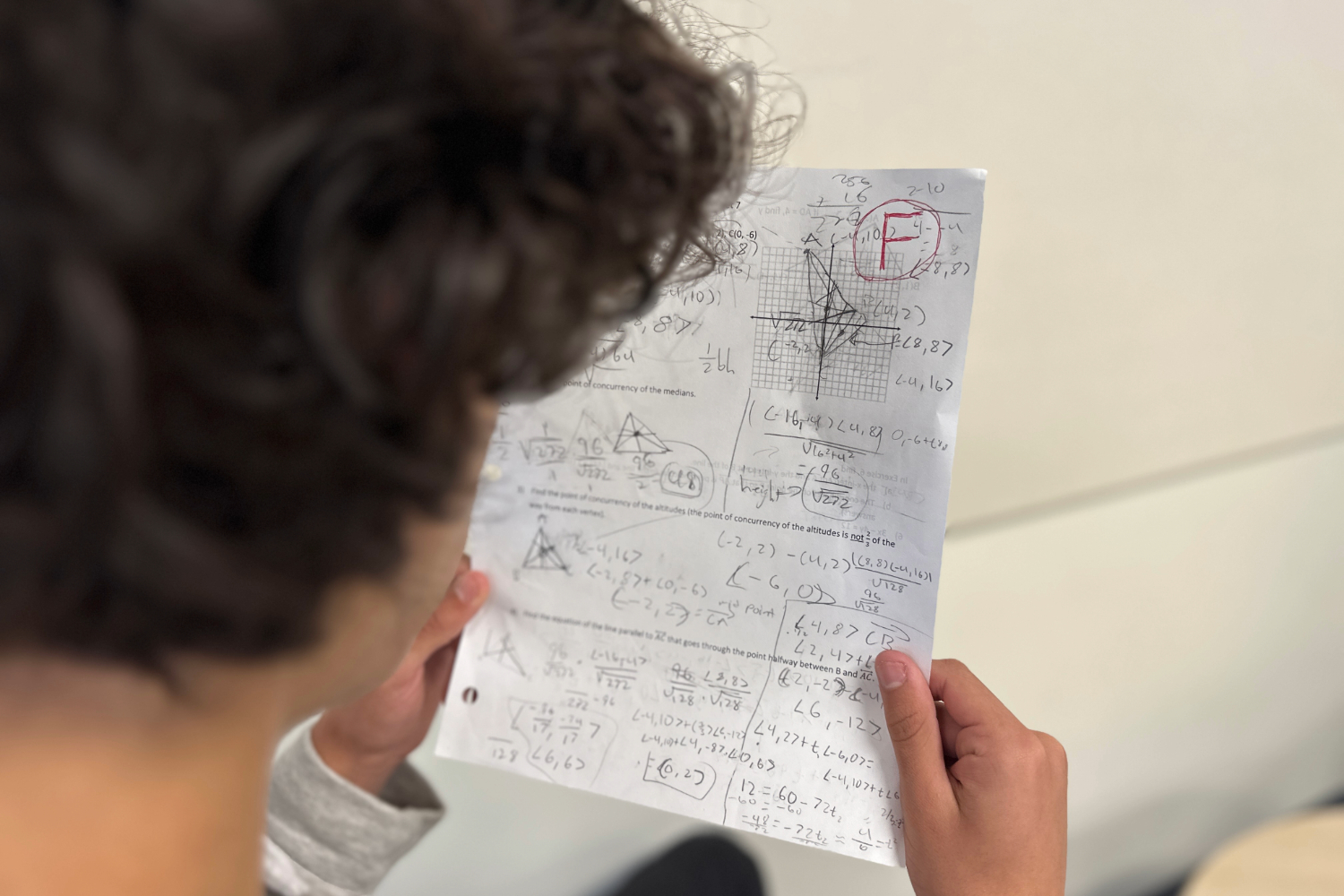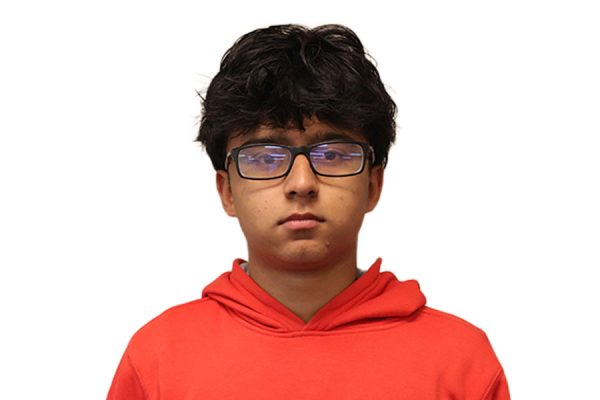Studying for success: techniques for effective learning

Imagine someone studying endlessly for hours on the weekend, confining themselves in their room. Yet, the next day, they take that test they spent the last few days studying for, and fail miserably.
You may have found yourself in this situation before. But why?
On average, high school students spend six hours studying per day, according to CollegiateParent. Overstudying is a common problem for students of all grade levels, causing students to waste time unnecessarily.
“To get high test scores, it’s an accumulation of doing a lot of things right as a student. A lot of that is paying attention by being involved in class and asking questions when you don’t understand something rather than being a passive participant and completing homework for mastery,” said Dan Nguyen, a math teacher at Carlmont High School.
According to a study conducted by Pew Research, the United States still lags behind other countries in math, sciences, and reading, with the U.S. ranking 38th out of 71 countries in math and 24th in science.
The American education system fails because students need more motivation to put more effort into producing better results, according to the Foundation for Economic Education. The lack of expectations among students creates demotivation to be an ambitious student, resulting in less successful outcomes.
A review on self-efficacy by Barry Zimmerman, an educational psychologist at the University of New York, found that self-efficacy accounted for around a 14% variance in student performance.
Self-efficacy refers to the way one acts to achieve specific goals. According to the American Psychological Association, self-efficacy is necessary to produce specific performance attainments, or more specifically, a student’s self-confidence.
“I think the one biggest thing for learning is enthusiasm. If you’re enthusiastic about learning, everything else will take care of itself. Everything you’ll be doing is because you want to be there and succeed,” Nguyen said.
However, many students also need help finding an effective way to study, skewing their ability to use their time wisely, and thus wasting a lot of time pointlessly.
A study from the National Library of Medicine revealed that practical study is one of the most essential skills to achieve excellent test scores. It showed that the increased use of various active study habits was directly associated with higher exam scores.
The study also discovered that students who only used an “active” study strategy — when the brain is forced to be active during the study session — scored around 8% higher than those who never utilized that approach.
In addition, specific study strategies — including explaining concepts, self-quizzing, and completing problem sets — were distinctly predictive of test performance.
Study Methods Used by Students by Joshua Wu
“If it’s memorizing some terms or facts, I use mnemonics and repeat to myself and read it over and over. Other times, when studying, I look over past work for that subject. Especially for any type of writing, I review past essays,” said Alex Kim, a sophomore at Carlmont High School.
Another popular study method students utilize is called the Feynman Technique, which employs the skill of teaching others in order to learn a concept thoroughly.
As the famous physicist Albert Einstein once said, “If you can’t explain it to a 6-year-old, you don’t understand it yourself.”
Richard Feynman was a renowned theoretical physicist, most known for his discoveries in quantum mechanics. He became an expert in physics by utilizing his study method, The Feynman Technique.
The Feynman Technique requires a student to learn a concept well enough to be able to explain said idea to a fifth grader. According to the University of Colorado Boulder, to be able to teach others “forces you to not only deeply master the information or skill but to also grasp how all of the different elements join together.”
The starting step in this study method is to study a topic. Next, one needs to find someone to teach said topic to, but in such basic terms so that they are able to understand and learn the subject entirely. If one does not successfully complete step two, one must go back to the drawing board and fill in the gaps.
The Feynman Technique Steps by Joshua Wu
One should ask themselves, “What parts were missed in the explanation? How could it be even more simple?” Finally, the last step is to teach an elementary schooler the newly learned concept.
“If you can teach another student, you understand it yourself,” Nguyen said.
According to a study on the Feynman technique, it is effective due to its constructivist, self-teaching, and self-determined learning approach, which allows students of all age levels to absorb the knowledge effectively.
In addition, it encourages deeper learning processes by utilizing synthesis, analysis, evaluation, and creativity, according to the study. It even employs metacognition, which refers to understanding one’s thought process.
“The Feynman Technique shows me what I do and don’t understand, and I can go back and study the topics I don’t know. It forces me to understand the material in order to be able to teach it,” said Sara Ho, a sophomore at Carlmont High School.
Francesco Cirillo, the inventor of the Pomodoro Technique, often struggled to focus on his work during his studies. In order to become more motivated to do work and organize his study schedule, he began using a tomato-shaped kitchen timer to help him stay focused.
Students need a to-do list and a timer to begin the Pomodoro Technique. In the first study session, students work for 25 minutes, ensuring maximum productivity. After the 25 minutes are up, students are allowed a five-minute break.
After every four “pomodoros,” or each 25-minute session, students can take a more extended 15 to 30-minute break.
“I liked how the Pomodoro Technique forced me to take a break and reset, which would often improve my productivity,” Ho said.
This technique of paced studying allows students to get things done efficiently. It will enable students to get started with their work, which is often the biggest reason why people procrastinate, according to todoist.com.
Furthermore, having the 25-minute timer as a goal can help improve productivity. Students will often find themselves trying to complete as much as possible within the time frame, which “gamifies” studying.
Additionally, the break at the end of the 25-minute session acts as a goal, thus improving productivity, as students will find themselves striving to earn that much-needed break.
A study conducted to evaluate the effects of the Pomodoro Technique on various behaviors found that people went from a high procrastination behavior to average after introducing the Pomodoro Technique.
The Pomodoro Technique, invented by Francesco Cirillo, has proven to be an effective way for students to combat procrastination and productivity.
The invention of the Internet by Vinton Cerf and Bob Kahn marked the beginning of an age where anyone could access any resource with an internet connection.
The History of the Internet by Joshua Wu
A study from Pew Research conducted in 2014 found that 87% of internet users said the internet helped them learn new skills, including learning new languages, writing, and coding.
Ever since, the internet has grown, and more resources have been made available to students across the globe. The development of the internet has allowed those with less funding and resources to access information regardless of their situation.
The internet has grown by being more informative to users and more adaptive to different learning styles.
However, the increased use of technology may also have a negative impact on students. Students may often find themselves distracted on their phones, computers, and other devices.
According to the National Library of Medicine study, it was found that students who were more distracted than others tended to score lower on exams. In addition, using the internet too much can also affect students’ brains and cause them to become ineffective with their time.
“Surfing the Internet and being on the screen too much can also affect one’s circadian rhythm, which can result in abnormal or inadequate sleep,” said Kaiser physician Tommy Tsai.
It is no secret that sleep helps the human brain grow and learn. According to the Sleep Foundation, teens require eight to 10 hours of sleep daily to ensure adequate rest. With proper sleep, students can improve performance during the day, increase information processing, improve attention, and make better decisions.
“Healthy sleep patterns have a direct correlation with overall cognitive performance, so sleep, along with appropriate nutrition, are the two biggest factors to review when faced with this question,” said Devin Normington, a psychiatrist for children and adolescents.
Furthermore, more sleep allows the brain to rest, relax, and improve memory for the next day.
“Sleep is directly correlated to memory consolidation. Disrupted sleep and not enough sleep can all have negative impacts on learning. Additionally, good sleep can improve stress and anxiety management, which will influence academic performance,” Normington said.
Enough sleep per night and a better quality of sleep directly allow students to learn, think, and act better with more thought.
The Effects of Good Sleep by Joshua Wu
“The more quality sleep one gets, the more energy one has for sustained attention and persistence through problem-solving, which may likely lead to better decision-making,” Normington said.
Sleep has numerous additional benefits, including a better quality of life that an individual experiences throughout a lifetime, and it can reduce the risk of chronic health problems, according to the National Heart, Lung, and Blood Institute.
“A well-rested individual is also less likely to report anxiety, stress, or depression,” Tsai said.
In short, study habits have a great effect on student performance, according to a study on the relationship between study habits and academic achievement. The study revealed that the use of study habits by a student greatly determines their academic success.
Being able to study effectively is crucial in order to absorb the extensive amounts of information gained at school, according to a study on how to study effectively.
As described, it is important to work towards learning new information but also utilizing healthy study habits to retain the information learned.
“Studying effectively is important because it maximizes learning in a shorter period,” said Kai Ren, an undergraduate student at Stanford.



